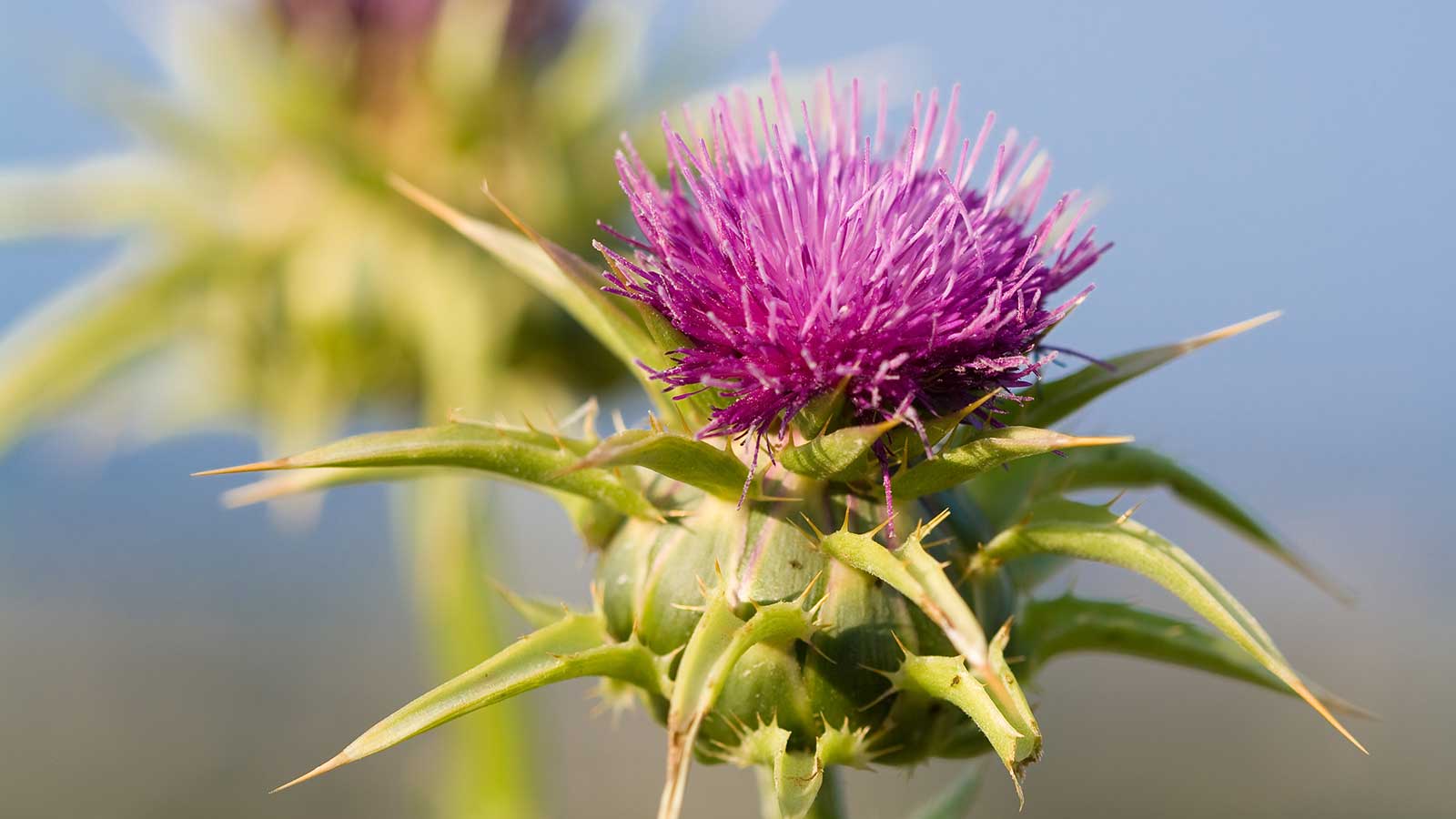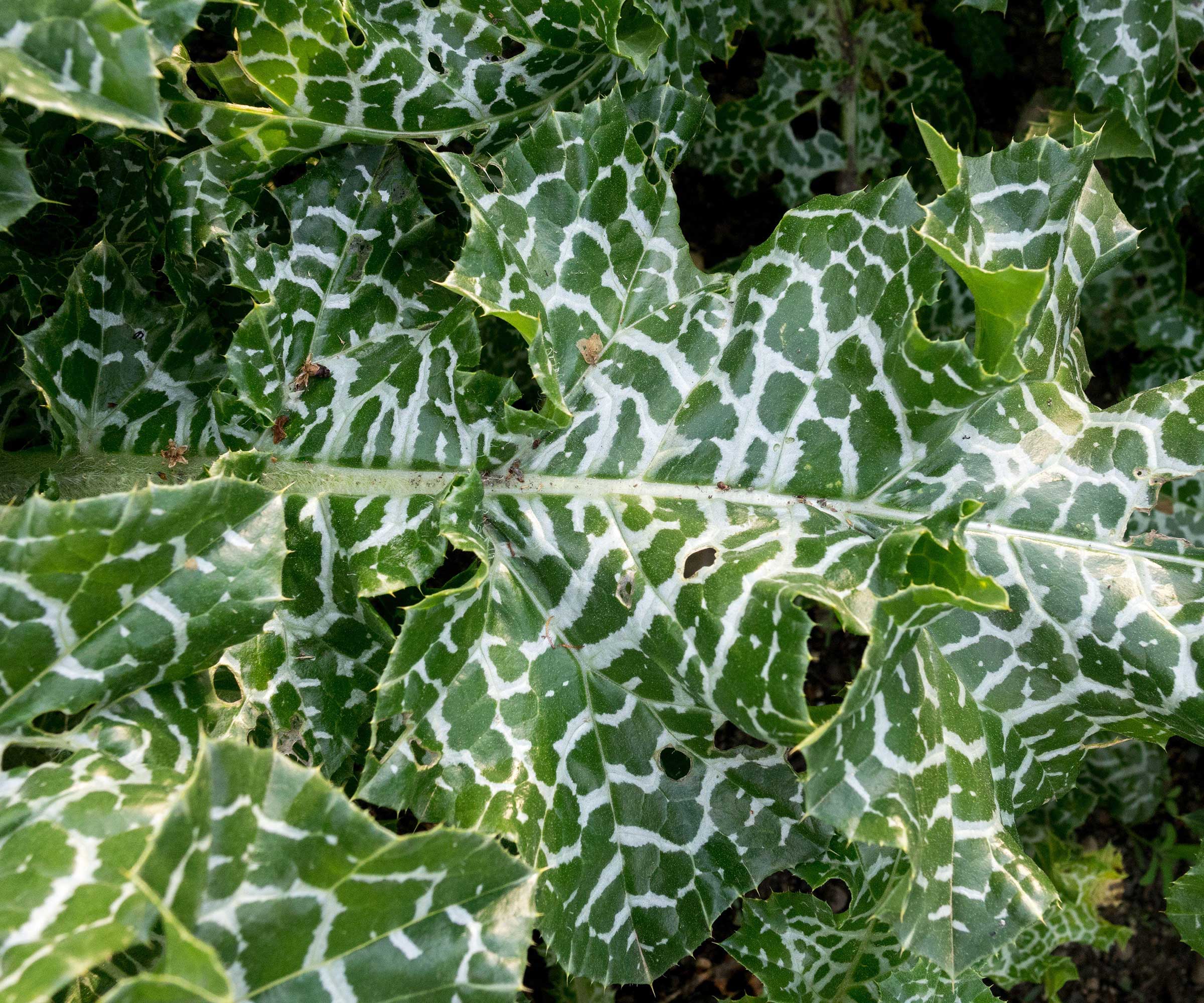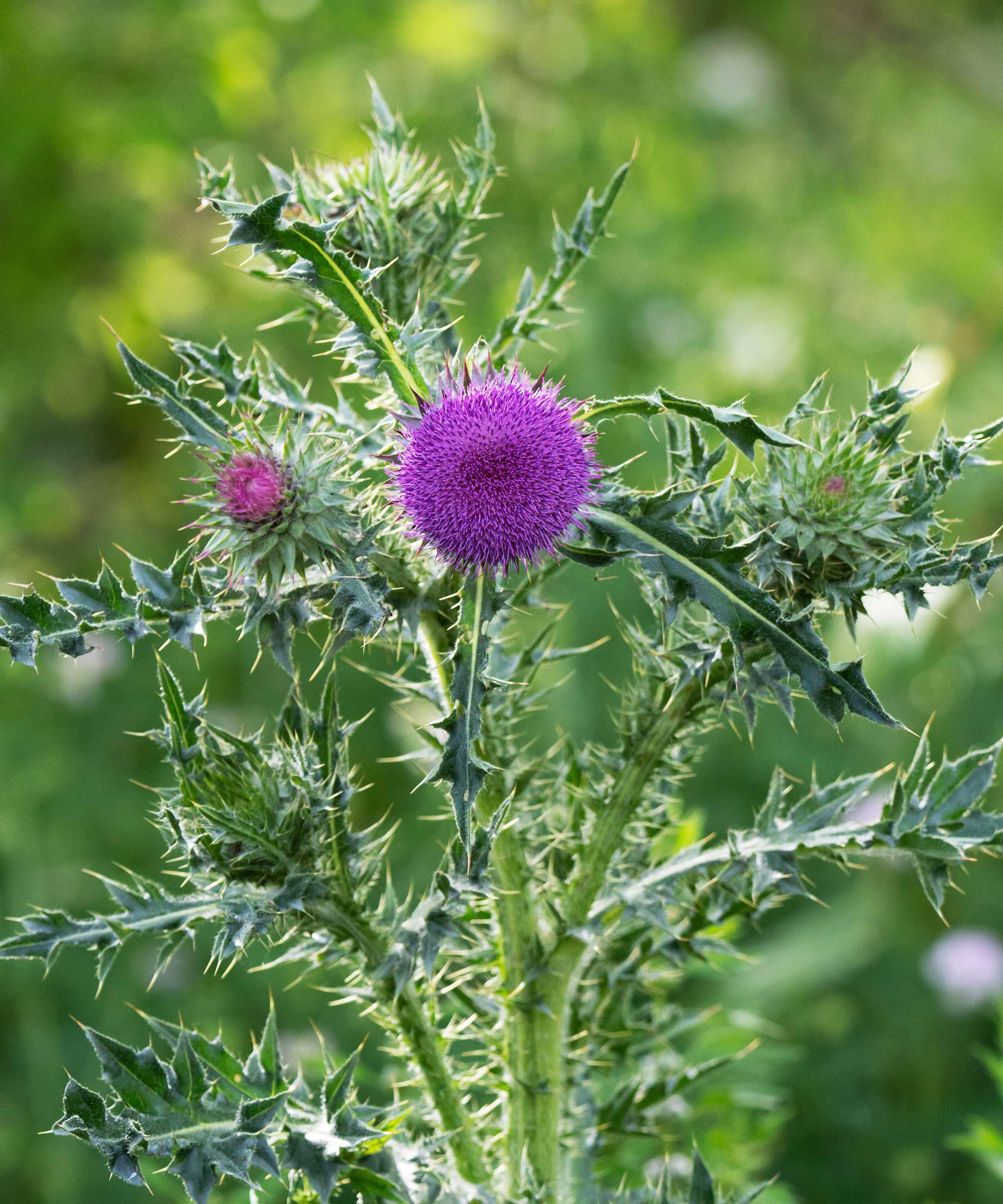
The purple flower heads may look pretty, but don't let that fool you. Milk thistle (Silybum marianum) can be a pain if it's growing in your yard.
It's non-native and can be an invasive plant, as Keri Wilson, horticulturist and writer for Garden Media Group, points out, noting that it's classified as a noxious weed in several states. It spreads by seed that can remain viable for years, she adds, and 'has the potential to destroy an ecosystem and create a monoculture'.
Thankfully, many of the classic ways to get rid of weeds will work on this interloper – including more natural options. Below, you'll find plenty of advice from gardening professionals to get this plant under control.

How to identify milk thistle
Milk thistles' large, spiny, dark-green leaves have white marbling, which is where the plant gets its common name from, explains Amy Enfield of ScottsMiracle-Gro. 'The plant is large – up to six feet tall,' she says. 'It blooms from late spring to early summer with a single pinkish-purple flower per stem.
'All parts of the plant have sharp spines, with the spines on the leaves being up to half an inch long. Once the plant flowers and sets seed, it dies.'
How to get rid of milk thistle

While it can be somewhat labor-intensive, it's possible to remove these deep-rooted weeds by hand. Craig McManus, founder of McPlants and host of The Garden Question Podcast, recommends pulling or digging them out before they establish. 'Wear gloves. Thick gloves,' he cautions.
Keri also says you can treat them with vinegar or boiling water. If you opt for either of these methods, be careful not to splash any nearby plants that you want to keep.
Timing is important, as Amy highlights. 'You need to control it before the plant has an opportunity to flower and set seed.'
For stubborn infestations in flower beds, you may want to opt for something stronger. Amy recommends using a non-selective weed control product, like Ortho® GroundClear® weed and grass killer (available from Amazon), which 'can effectively kill milk thistle down to the root.' Apply it on a calm day, she says, following the directions on the label, and protect desirable plants from coming into contact with the product. 'For best results, treat milk thistle plants when they are young and actively growing.'
Top tip: 'Always avoid composting any part of milk thistle,' warns Craig. Instead, he recommends bagging up the plant and sending it to landfill.

These durable gardening gloves from Oizen will help protect your hands against thorns, and are touch-screen friendly.
FAQs
How can you get rid of milk thistle growing in a lawn?
'Applying a weed-control product containing the active ingredients 2,4-D or triclopyr should provide control when applied to actively growing plants before they have flowered,' says Amy, noting to always read product labels before applying any control product.
For a more natural approach to killing these weeds (but not your grass), you could try repeatedly mowing them down. Not only does this prevent flowering, but it can also help deplete the root reserves over time so the plant eventually starves, Amy says.
How can you prevent milk thistle from growing in your yard?
Amy suggests adding a thick layer of mulch throughout garden beds. This will help prevent milk thistle seeds from sprouting by blocking their access to sunlight, she explains.
'Improve your soil health and avoid bare soil, which is very desirable to milk thistle,' says Craig, who also recommends promoting the growth of competitive, dense-growing native grasses, perennials, cover crops, and green mulches. You should be persistent in scouting for young seedlings, he adds.
'To prevent milk thistle in the lawn, regular lawn feedings (four times per year) is key,' Amy notes. 'A thick, dense lawn is better able to crowd out weeds before they can become established.'
If you're looking for advice on how to get rid of dandelions and creeping Charlie, too, our dedicated guides will help.







